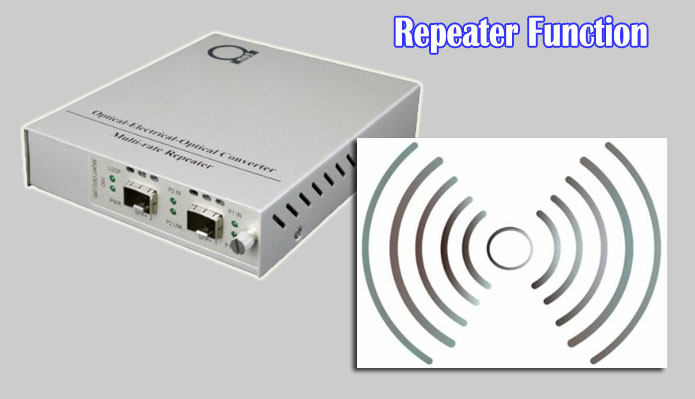Understanding the Repeater Function: How It Works and Why It’s Important
A repeater is an essential device in telecommunications and networking, playing a vital role in extending the range of signals. In various communication systems, signals often lose strength, clarity, and quality as they travel over long distances. A repeater helps solve this issue by amplifying and retransmitting the signal to ensure it reaches its destination without significant degradation. In this article, we will explore the repeater function, how it works, its different types, and why it’s essential in modern communication systems.
What is a Repeater?
A repeater is an electronic device that receives a signal and retransmits it at a higher power level or over a different frequency, ensuring that the signal can cover a larger distance without loss of quality. It’s commonly used in various systems, including radio communication, satellite communication, optical fiber networks, and wireless networks.
The primary function of a repeater is to boost weak signals so that they can travel longer distances. Without repeaters, signals would degrade, leading to communication failures or poor signal quality, especially over long distances or in areas with significant interference or obstacles like buildings or mountains.
How Does a Repeater Work?
The basic function of a repeater involves three main steps:
- Signal Reception: The repeater first receives the incoming signal, which is typically weakened or distorted after traveling a certain distance.
- Signal Amplification: Once received, the repeater amplifies or boosts the signal strength. Depending on the type of repeater, this process may involve cleaning up noise and restoring the signal’s original quality.
- Signal Transmission: After amplification, the repeater retransmits the signal over the same or a different frequency, allowing it to travel further without losing strength or quality.
Types of Repeaters
There are several types of repeaters, each designed for specific applications and environments. Let’s look at some of the most common types:
1. Radio Repeaters
Radio repeaters are widely used in two-way radio communication systems, such as police radios, emergency services, and amateur radio. These repeaters receive radio signals from one point and retransmit them, allowing communication between stations that are far apart. Radio repeaters are typically installed on high towers or mountains to maximize coverage.
2. Optical Repeaters
Optical repeaters are used in fiber-optic communication systems. Since light signals transmitted through fiber-optic cables can weaken after a certain distance, optical repeaters amplify these light signals to ensure data integrity and high-speed communication across long distances. This technology is critical for global internet infrastructure, as it enables fast and reliable communication across continents.
3. Wi-Fi Repeaters
Wi-Fi repeaters (or extenders) are devices used to extend the range of a Wi-Fi network. In homes and offices, Wi-Fi signals may weaken due to walls, floors, and other obstacles. A Wi-Fi repeater receives the existing Wi-Fi signal, amplifies it, and retransmits it, allowing users to access the internet in areas where the signal was previously weak or non-existent.
4. Satellite Repeaters
Satellite repeaters are used in satellite communication systems to relay signals between the Earth and satellites in space. Satellites act as repeaters by receiving signals from ground stations, amplifying them, and retransmitting them back to other parts of the Earth. This technology is critical for global communication, GPS, and satellite TV services.
5. Cellular Repeaters
Also known as signal boosters, cellular repeaters are used to amplify mobile network signals. In areas with poor cellular reception, such as remote locations or buildings with thick walls, a cellular repeater can boost the signal strength, allowing mobile devices to connect to the network with better quality.
Applications of Repeaters
Repeaters are used in many industries and systems to ensure reliable communication. Here are some of the key applications:
1. Telecommunications
In telecommunications, repeaters are essential for long-distance communication. They help ensure that phone calls, internet data, and television signals can travel over vast distances without loss of quality. Optical fiber repeaters, in particular, are used extensively to maintain high-speed data transmission across continents.
2. Broadcasting
Radio and TV broadcasting rely on repeaters to extend their reach. In remote or mountainous regions, repeaters are used to transmit radio and television signals to ensure that people in those areas can receive broadcasts without interference or signal loss.
3. Wireless Networks
In homes, offices, and public spaces, Wi-Fi repeaters are commonly used to eliminate dead zones. By boosting the signal of a wireless network, repeaters ensure consistent internet access throughout large areas or buildings with many obstructions.
4. Amateur Radio
Amateur radio operators (also known as ham radio enthusiasts) use repeaters to extend the range of their radio communications. By installing repeaters on high towers or elevated areas, operators can communicate over greater distances, often enabling communication across cities or regions.
5. Emergency Services
Emergency services like police, fire departments, and medical responders rely heavily on radio repeaters. These repeaters ensure that first responders can communicate effectively, even in challenging environments like mountainous regions or urban areas with tall buildings.
Advantages of Using Repeaters
1. Extended Range
The most obvious advantage of a repeater is that it significantly extends the range of communication. By amplifying and retransmitting signals, repeaters allow data to travel over much greater distances than would otherwise be possible.
2. Improved Signal Quality
Repeaters help maintain the quality of a signal by amplifying it and reducing noise or interference. This is especially important in environments where there are many obstacles or sources of interference.
3. Cost-Effective
In many cases, installing repeaters can be a cost-effective solution to extend network coverage without needing to lay down new cables or invest in more expensive infrastructure.
Disadvantages of Using Repeaters
While repeaters offer significant benefits, they also have some limitations:
1. Latency Issues
Repeaters can introduce a slight delay (latency) in the transmission of signals. While this delay is usually minimal, it can be an issue in applications requiring real-time communication, such as live video streaming or gaming.
2. Limited Bandwidth
Repeaters do not increase the bandwidth of a network. They simply extend the existing signal. This means that if the original network has limited bandwidth, a repeater will not improve its performance in terms of data capacity.
3. Signal Interference
If repeaters are not configured correctly, they can introduce interference or cause signal overlap, leading to reduced signal quality instead of improvement.
Conclusion
The repeater function is crucial in many communication and networking systems, ensuring that signals can travel further without losing strength or quality. Whether it’s in telecommunications, broadcasting, or Wi-Fi networks, repeaters play an essential role in maintaining reliable communication over long distances. Understanding how repeaters work, their applications, and their advantages and disadvantages can help individuals and businesses optimize their communication infrastructure.
As technology continues to evolve, the role of repeaters will remain vital in ensuring that we stay connected, no matter how far apart we may be.



